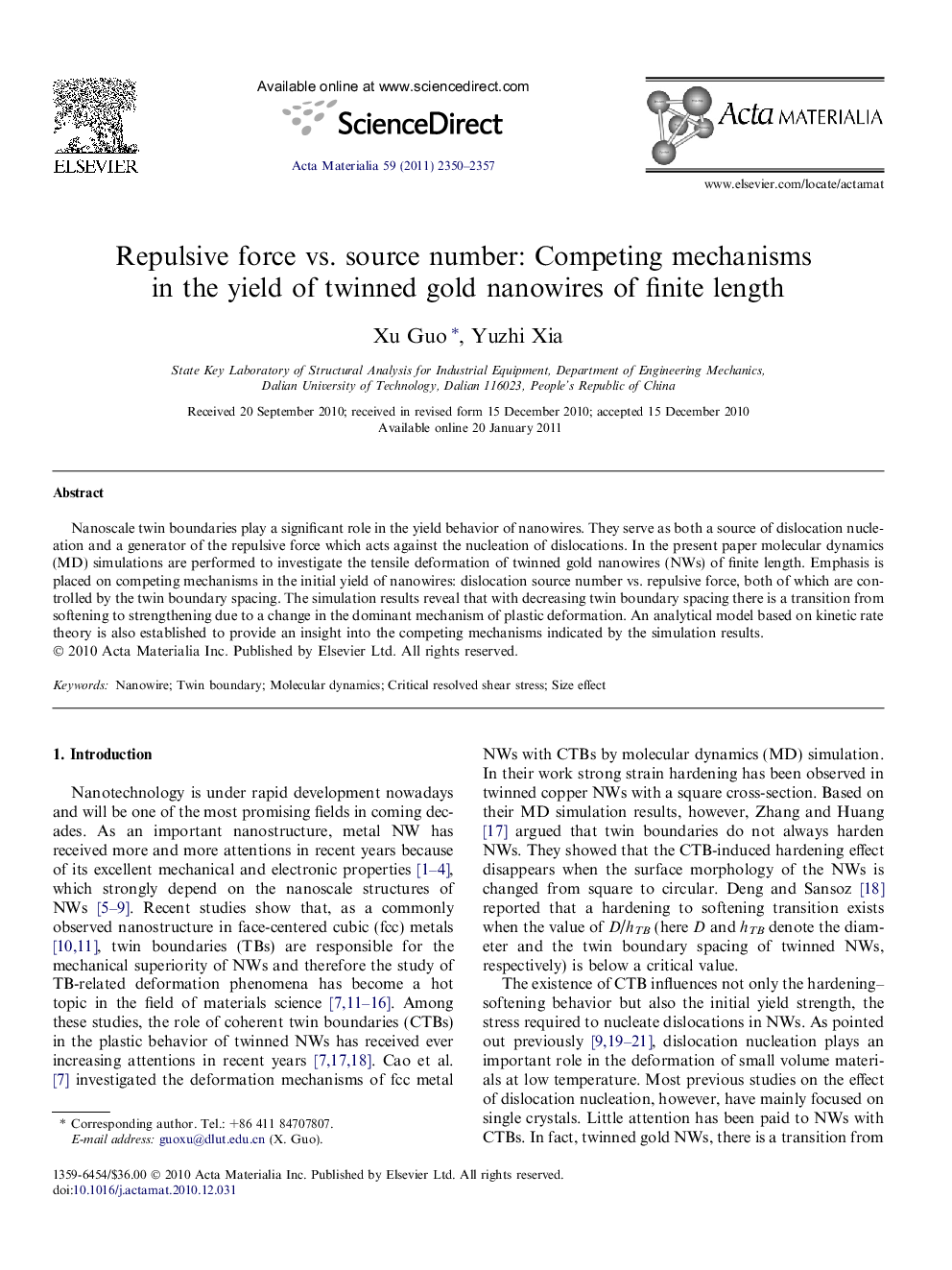| Article ID | Journal | Published Year | Pages | File Type |
|---|---|---|---|---|
| 1447227 | Acta Materialia | 2011 | 8 Pages |
Nanoscale twin boundaries play a significant role in the yield behavior of nanowires. They serve as both a source of dislocation nucleation and a generator of the repulsive force which acts against the nucleation of dislocations. In the present paper molecular dynamics (MD) simulations are performed to investigate the tensile deformation of twinned gold nanowires (NWs) of finite length. Emphasis is placed on competing mechanisms in the initial yield of nanowires: dislocation source number vs. repulsive force, both of which are controlled by the twin boundary spacing. The simulation results reveal that with decreasing twin boundary spacing there is a transition from softening to strengthening due to a change in the dominant mechanism of plastic deformation. An analytical model based on kinetic rate theory is also established to provide an insight into the competing mechanisms indicated by the simulation results.
